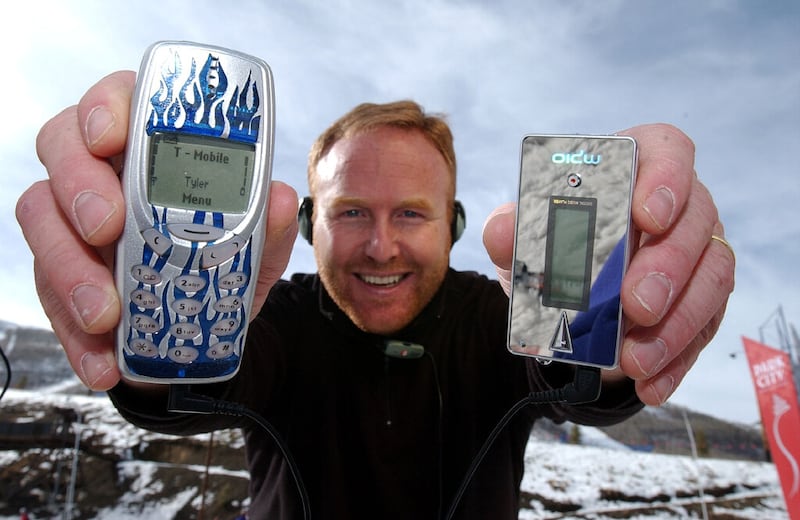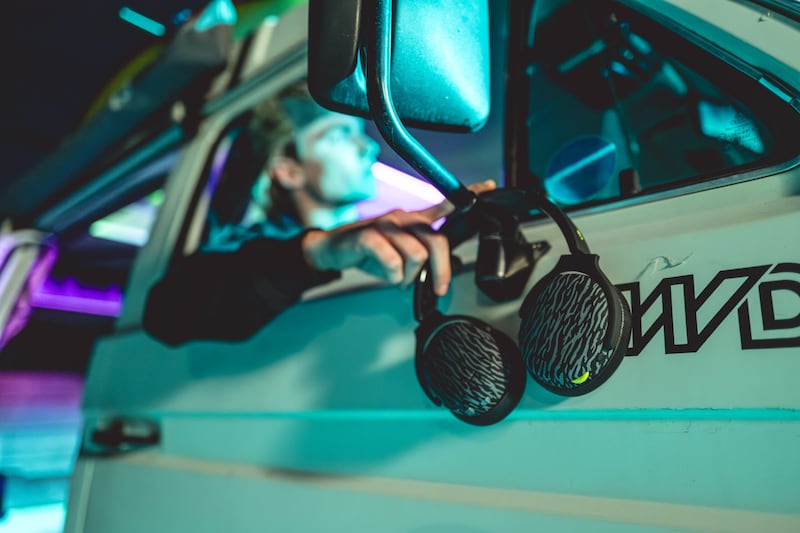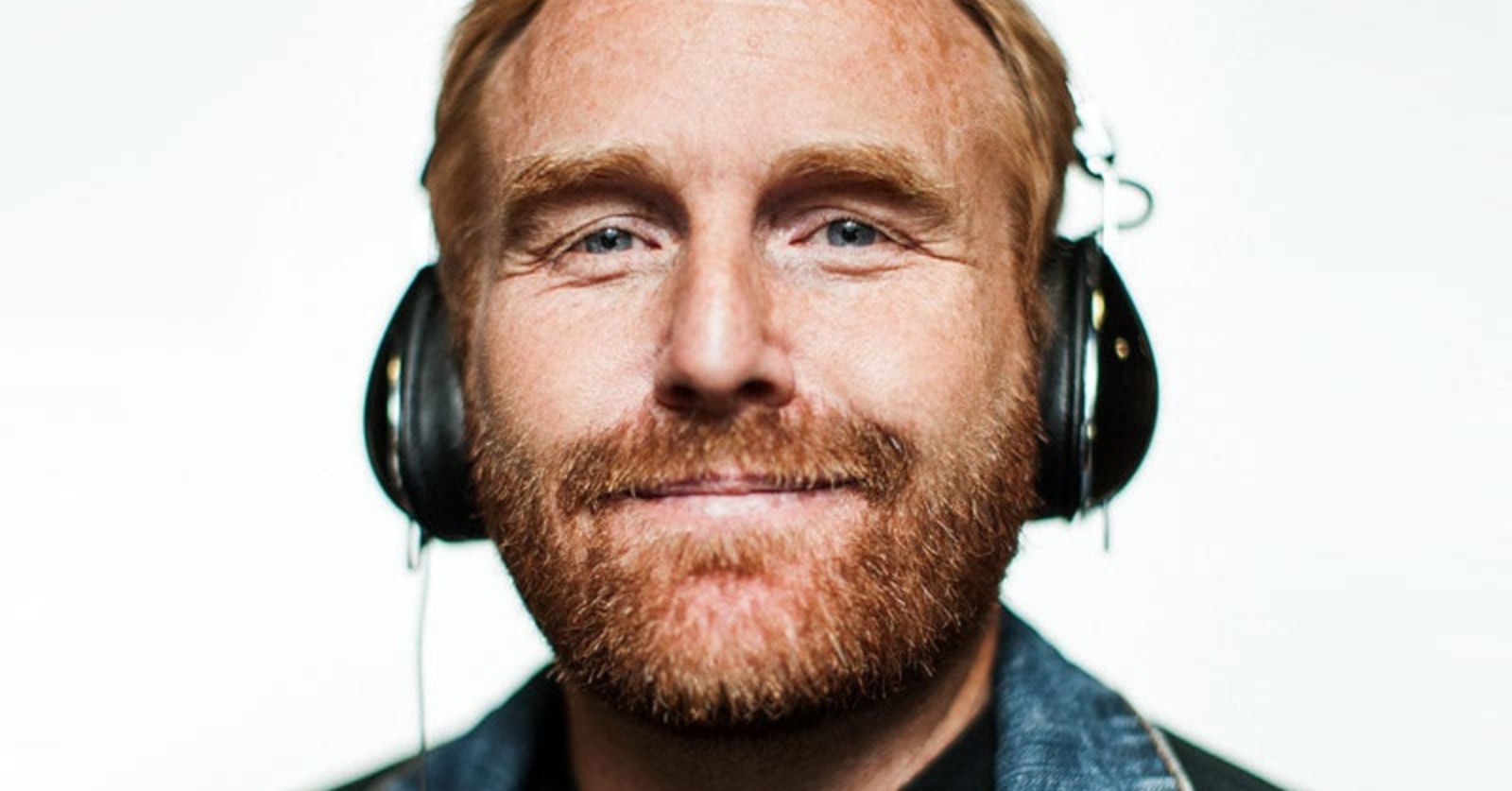Everything I’ve done has been built around snowboarding—and building product.
I knew I wanted to design and build stuff for a living early in my life. I didn’t know what I wanted to build, but I knew I wanted to build something, put it on a shelf next to other product and watch people choose mine over someone else’s. When I was really young, it crossed my mind that every skateboard company had employees, so I thought I’d just work for one of them. Later on, though, snowboarding came around.
I always felt secure knowing that, as long as I found a relevant product to sell, I could stay in snowboarding forever.
Deep into my snowboard career, my partner and I were suffering through the seasonality of snowsports when two other industry guys—Chad DiNenna and Andy Laats—started NIXON watches and were killing it. Sometime in the late ’90s, I heard them present at a surf/skate/snow industry conference, and what they were doing blew my mind. They found an existing, non-sport-specific product that could be sold all year long and modified the technology to be unique to surfers, specifically for them and their friends.
DiNenna and Laats wanted a great surf watch built by surfers, for surfers, so they created a waterproof watch with tide tables, patented a “locking looper” to lock down the extra flap of the watch band, and implemented surfer-specific styling and branding. They started selling watches in surf/skate/snow shops. After blowing up there, they found large-scale distribution through traditional retail. Walking out of that conference, I started looking for a product with 12-month revenue that would keep me in snowsports.
After Nixon, Skullcandy would become the second non-sport product category launched through sideways-sport retail.
Carving out a market
My first venture was a snowboard events company called National Snowboard Inc. (NSI), which I co-founded in 1986 with Jim Gardner while we were studying at the University of Colorado Boulder. We produced snowboarding events nationwide, but we also wanted to sell a consumer product, so we created the ShredAmeriCard. This card gave snowboarders discounts on lift tickets, at shops and for any snowboard product we could add to the program.
Snowboarding was such a small thing back then, and we needed to pool together a core group of snowboarders to sell to. It crossed my mind that Burton had customers fill out product registration forms with every snowboard they sold, and snowboard magazines had subscriber lists. Why not get the registration lists from Burton and the subscriber lists from Transworld Snowboarding magazine? We went into direct marketing and operated a call center staffed by summer-poor snowboarders, selling to incredibly current lists. In our second year, we learned direct mail as well. We had so much fun.
We also had great margins and passionate customers, and we figured out how to sell. When NSI was acquired by the American Ski Association in 1991, we became multi-thousand-aires overnight.

Moving to Park City
With the money from NSI, I built my first prototype for Device Manufacturing—the first step-in snowboard boot and binding system—in 1993. Our first product was launched in 1995. My co-founder, Brett Conrad (owner of the skateboard shop I worked at in college and my first sponsor), and I eventually sold that company to RIDE Snowboards, and the final disposition of the company ended up with the company Atomic Skis.
I had a contract to continue working for Atomic for three great years. Suddenly, I was traveling to Austria and building snowboard bindings with the greatest ski binding engineers in the greatest ski engineering facility on the planet in Altenmarkt, Austria. They would fly me to glaciers in the summer up in the Alps for product testing and to sales meetings in the mountains of Japan. I was living the greatest snowboard-boot-and-binding lifestyle you could imagine.
With the binding company sold, my wife and I chose to move from Colorado to raise our family in Park City, Utah. We were both snowboarders, and we knew our family would be a snowboarding family. We agreed we were going to raise our children in a ski town. I was tired of not being able to see a chairlift from my bedroom in Denver. We came to Park City in 2001 and built a home—snowboarding made us debt-free. I was ready to figure out what was next.
From chairlift to concept
The story has been told many times that I was sitting on a chairlift when I got the idea for Skullcandy, and it’s true—all my friends and I were snowboarding nonstop and producing pro snowboarding events.
While setting up for a World Cup event one day, I was standing on some scaffolding. Cellphones had just come out. I was hanging banners in the middle of a snowstorm and taking a phone call. I was always listening to music, so I had to take my headphones off to take the call. Every time I sat on a chairlift, it was the same story—I’d have to pull my headphones off, then pull my phone out of my pocket and answer it before they hung up. What was needed was a pair of headphones that could do it all: I wanted to snowboard, listen to music and take my calls at the same time without having to take my gloves off.
I kept a notebook where I wrote down every product idea that came to mind, and around this same time, I was actually in the middle of developing a completely different product. While I was at the CES Trade Show to find a manufacturer for that product—a smart GPS—I noticed one of the factories I was talking to also made stereo headphones as well as hands-free cellphone earbuds.
At the end of our conversation about the product I was trying to develop, I asked the manufacturer, “Hey, I’ve got another thing I’d like to see if you can build.” Thirty days later, they sent me my first working prototype of what became Skullcandy LINK.
Tuned for innovation
In 2003, we launched Skullcandy with LINK technology. It was a great pair of stereo headphones with two different plugs—one for your cellphone and one for your music player. Skullcandy has always been driven to give listeners new ways to listen to music, and we didn’t launch with ordinary headphones.
While developing LINK, I started looking for other cool things to do in audio. The same factory I was working with also had a pair of gaming headphones that made the “explosions” vibrate on your head. I asked them if they could tune that driver for music to serve as a separately powered subwoofer built into music headphones. They had it done the next morning.
The second product we launched with, Skullcrushers (named by Chris Williams, Skullcandy’s first employee), has been a major revenue contributor since day one. Today’s iteration—the Crusher®—is still one of our top products because it gives the listener a totally unique experience. The functional differences of Skullcrusher and LINK gave the company a reason to enter the audio category by doing something never before done.
When cords dropped and circuit boards with power sources became part of headphones, it created a whole new creative platform. It crossed my mind almost immediately that you could put active noise cancellation and subwoofer technology together. Our current ANC Crusher has been described as one of the best pairs of headphones ever built.
In the ear of the shopper
Similar to how surf/skate/snow shops didn’t sell watches before DiNetta and Laats came along, we’d walk into those shops to sell our product, and they’d say, “We don’t sell headphones.” We’d reply, “Yeah, but your customers listen to music, and if you put these headphones on your shelf, they’re going to buy them.” It was a new category for retailers, and selling Skullcandy gave surf/skate/snow retailers an opportunity to increase revenue. They weren’t dropping one brand for another; selling headphones created a whole new category of money they had never had before. We were able to launch on shelves with no competition.
Skullcandy headphones have always been sold through third-party retail. I like making product, selling it and telling stories. I don’t want to be a retailer. I think corporate-owned stores are weak. I value the filter of having third-party retail buyers judge your product logistics capabilities against your competition, and there is no greater scorecard than sell-through.
In the Device Manufacturing days, I’d go into snowboard shops and watch how people bought boots. I wanted to see how they would handle the new concept of step-in. You’ve got to know how people buy a product if you’re going to sell it to them, and I love watching customers pull my product off a shelf and decide to buy it. Watching people shop is my favorite sport in the world, and it also tells you what you’re doing wrong. We earn a place in the consumer marketplace by going to buyers who have a lot of decisions to make and having them choose us.
Riding the wave of change
People change, products change, market conditions change and methods of sale change. Technology advances quickly, but a pivot within an industry is just a pivot. Skullcandy has ultimately been able to stay on top of the latest innovations because our employees and customers are leading music listeners, music producers and athletes. We hired a great team from the same group of passionate snowboarders to whom we wanted to sell our product. Both our employees and customers have always been on that first wave of what’s new and cool.
Companies change, too. I remember learning the phrase “exit strategy.” Build a company, have a ton of fun with it and then sell it—it made instant sense to me. A company cannot be its founder, and I always said, “I’m here to obsolete myself.” Besides, a product guy can only stand so much corporate structuring and optimizing before he wants to go back to just building product again. In 2011, Jeff Kearl and I were working on Stance Socks, Skullcandy was going public, and it was a great time for a transition.
I love the fact that Skullcandy today is a lot bigger than it was when I sold it. I love Thomas Lynch (Mill Road Capital), Skullcandy’s brand steward, who owns the company today. I love how seriously he takes the brand and how seriously Skullcandy employees continue to take it. And everyone should know Brian Garofalow, our new CEO, who is another product of a passion for snowboarding.
Building something new and making bank for my family and investors—while forever snowboarding—was always my ultimate plan. Things in Park City turned out great. Thank you to the Utah business community and our group of friends there, who were nothing short of incredible to collaborate with.


